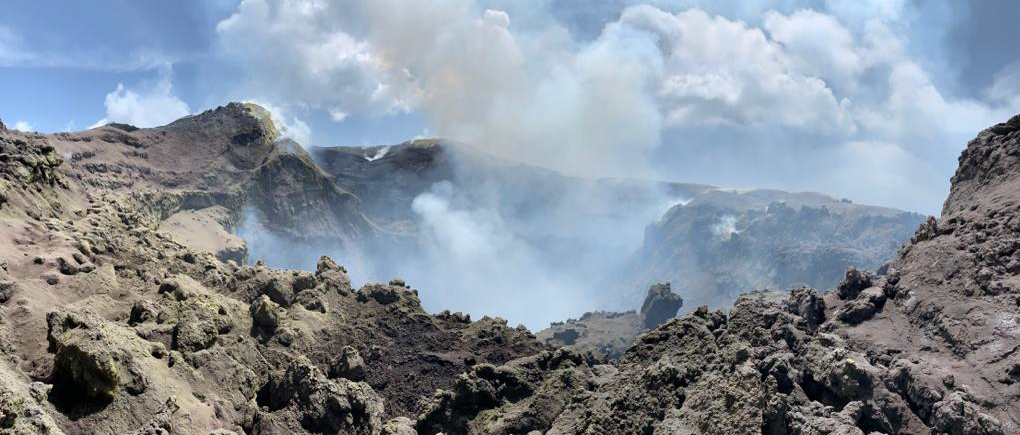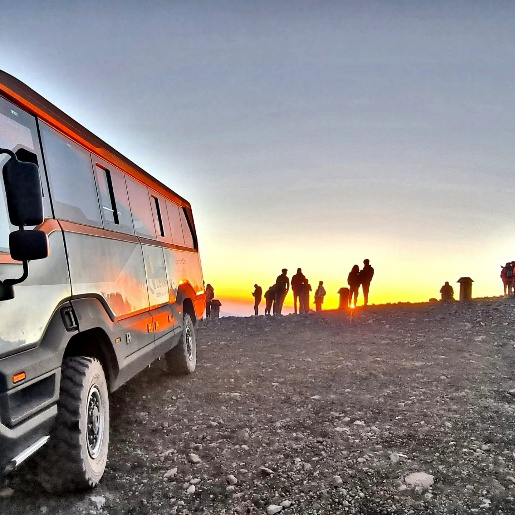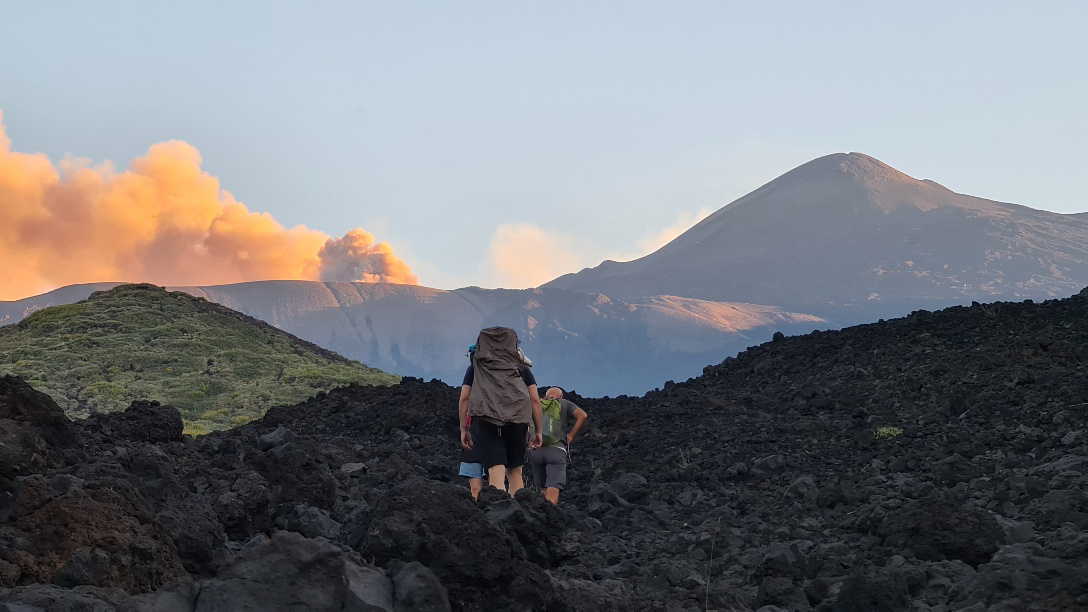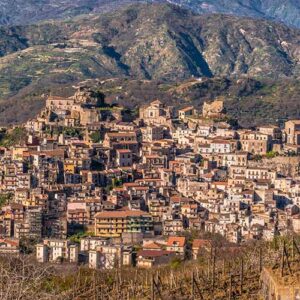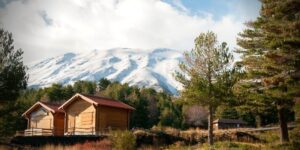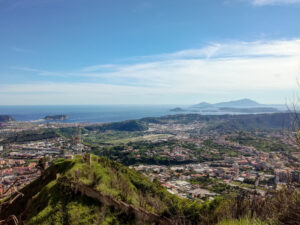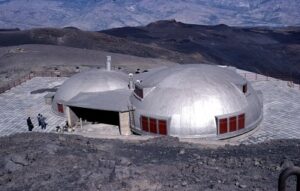Mount Etna, Europe’s largest and most active volcano, has a long history of eruptions that have shaped the landscape and impacted the lives of those living in its shadow. Among these, the 2002 eruption stands out as one of the most significant and destructive events in recent history, particularly for the town of Linguaglossa. This article delves into the details of the 2002 eruption, its impact on Linguaglossa, and the subsequent response and recovery efforts.
Prelude to the Eruption
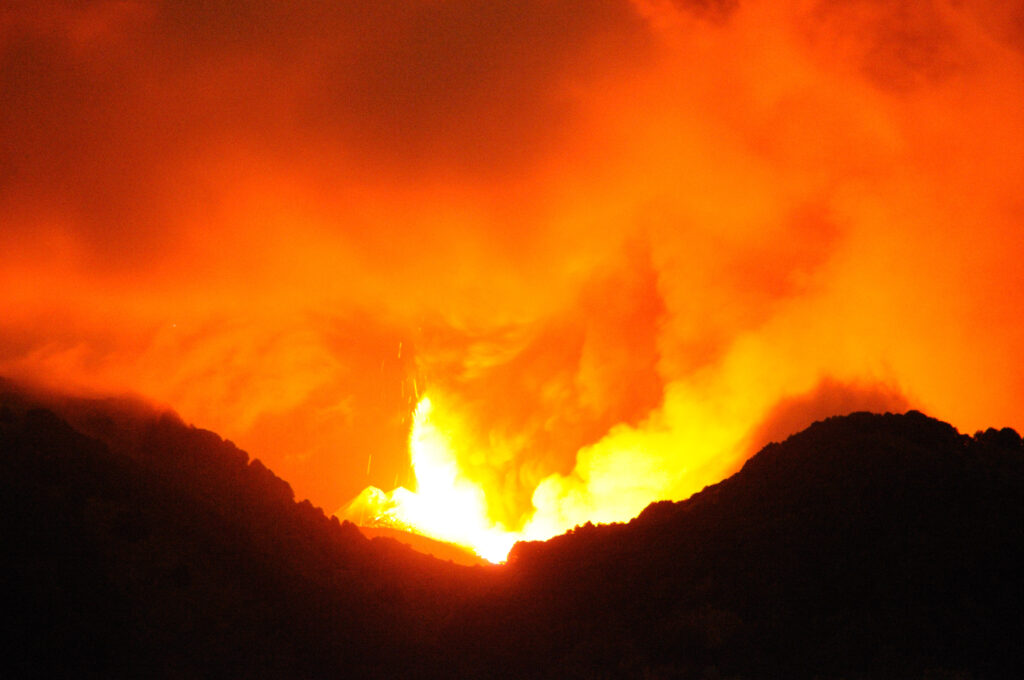
The eruption of Mount Etna in 2002 began on the night between October 26 and 27, following a period of intense seismic activity. This seismicity was a precursor to the opening of two eruptive fissures on the northeastern and southern flanks of the volcano. The northeastern fissure, located between 2500 and 1850 meters in elevation, and the southern fissure, at about 2750 meters, marked the beginning of a catastrophic event that would last for several months.
The Eruption Unfolds
The initial phase of the eruption was characterized by explosive activity and the formation of pyroclastic cones. The northeastern rift, known as the “bottoniera,” quickly became active, emitting lava and ash. The lava flows from this rift advanced rapidly, destroying the tourist area of Piano Provenzana and threatening the town of Linguaglossa. The southern flank also experienced significant explosive activity, with lava fountains and ash plumes reaching considerable heights. By the afternoon of October 27, the main lava flow had buried Piano Provenzana and was advancing through the Ragabo pine forest towards Linguaglossa. The Italian Army and other emergency services were deployed to create barriers and attempt to divert the lava flow, but the sheer volume and speed of the lava made these efforts largely ineffective.
Impact on Linguaglossa

Linguaglossa, a town located approximately 10 kilometers from the northeastern rift, faced significant threats from both the lava flows and the continuous seismic activity. The town’s residents experienced moments of panic and apprehension as the incandescent lava river approached. The lava flow ultimately stopped just 5 kilometers from the town, sparing it from direct destruction but causing widespread fear and disruption.The eruption also had a profound impact on the local environment. Approximately 250 hectares of centuries-old pine forest and oak woods were destroyed, along with numerous tourist facilities, including hotels, restaurants, and ski slopes. The destruction of Piano Provenzana, a popular tourist destination, dealt a severe blow to the local economy, which relied heavily on tourism.
Seismic Activity and Earthquakes
In addition to the volcanic activity, the 2002 eruption was accompanied by a series of strong earthquakes. On October 29, a magnitude 4.4 earthquake struck the lower southeastern flank of the volcano, causing significant damage in the town of Santa Venerina and leaving around 1,000 people homeless. This earthquake, along with subsequent tremors, exacerbated the already dire situation and highlighted the dual threat of volcanic and seismic hazards in the region.
Response and Recovery
The response to the 2002 eruption involved a coordinated effort by various emergency services, including the Italian Army, Civil Protection Department, and local authorities. Over 1,500 personnel and 500 vehicles were deployed to manage the crisis, with efforts focused on evacuating residents, creating barriers to divert lava flows, and providing medical and logistical support.One notable aspect of the response was the use of traditional practices by the residents of Linguaglossa. In a bid to protect their town, the citizens invoked Saint Egidio, their patron saint, and carried his statue in a procession to the train station, hoping for divine intervention to stop the lava flow. This act of faith, combined with the tireless efforts of emergency workers, helped to mitigate the impact of the eruption on the town.
Long-term Effects and Lessons Learned
The 2002 eruption of Mount Etna had lasting effects on the region. The destruction of Piano Provenzana and the surrounding forests significantly impacted the local economy, which took years to recover. The eruption also heightened awareness of volcanic and seismic hazards among the Sicilian public, leading to improved monitoring and preparedness measures for future events.In the years following the eruption, extensive research was conducted to better understand the dynamics of the 2002 event and to improve hazard assessment and mitigation strategies. Studies focused on the mechanical, thermal, and environmental interactions between lava flows and the landscape, providing valuable insights into the behavior of basaltic lava and the factors influencing its flow and impact.
Conclusion
The 2002 eruption of Mount Etna was a catastrophic event that left a lasting mark on the town of Linguaglossa and the surrounding region. The combination of explosive volcanic activity, destructive lava flows, and strong seismic events created a complex and challenging situation for residents and emergency responders alike. Despite the devastation, the resilience and determination of the local community, combined with the efforts of emergency services, helped to mitigate the impact and pave the way for recovery and rebuilding.As one of the most significant eruptions in recent history, the 2002 event serves as a reminder of the power and unpredictability of volcanic activity. It underscores the importance of continuous monitoring, preparedness, and research to better understand and manage the risks associated with living in the shadow of an active volcano like Mount Etna.

